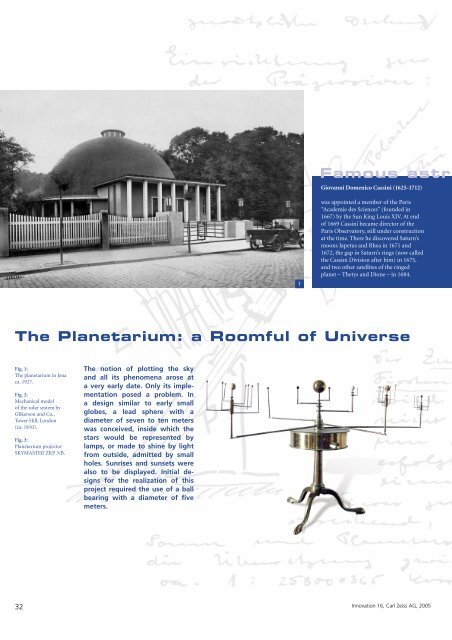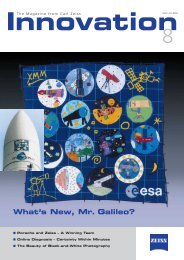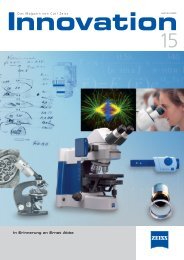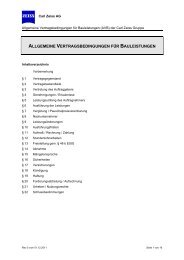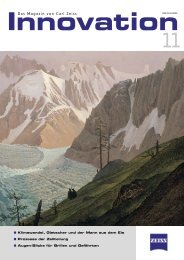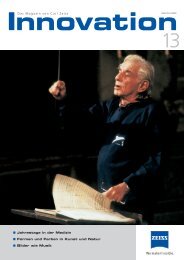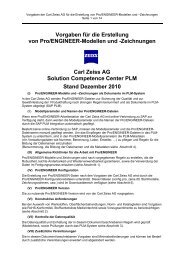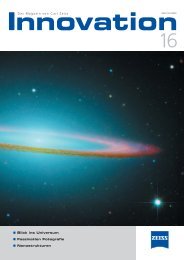Download PDF - Carl Zeiss
Download PDF - Carl Zeiss
Download PDF - Carl Zeiss
You also want an ePaper? Increase the reach of your titles
YUMPU automatically turns print PDFs into web optimized ePapers that Google loves.
The Planetarium: a Roomful of Universe<br />
Fig. 1:<br />
The planetarium in Jena<br />
ca. 1927.<br />
Fig. 2:<br />
Mechanical model<br />
of the solar system by<br />
Glikerson and Co.,<br />
Tower Hill, London<br />
(ca. 1810).<br />
Fig. 3:<br />
Planetarium projector<br />
SKYMASTER ZKP 3/B.<br />
32<br />
The notion of plotting the sky<br />
and all its phenomena arose at<br />
a very early date. Only its implementation<br />
posed a problem. In<br />
a design similar to early small<br />
globes, a lead sphere with a<br />
diameter of seven to ten meters<br />
was conceived, inside which the<br />
stars would be represented by<br />
lamps, or made to shine by light<br />
from outside, admitted by small<br />
holes. Sunrises and sunsets were<br />
also to be displayed. Initial designs<br />
for the realization of this<br />
project required the use of a ball<br />
bearing with a diameter of five<br />
meters.<br />
1<br />
Famous astro<br />
Giovanni Domenico Cassini (1625-1712)<br />
was appointed a member of the Paris<br />
“Academie des Sciences” (founded in<br />
1667) by the Sun King Louis XIV. At end<br />
of 1669 Cassini became director of the<br />
Paris Observatory, still under construction<br />
at the time. There he discovered Saturn’s<br />
moons Japetus and Rhea in 1671 and<br />
1672, the gap in Saturn’s rings (now called<br />
the Cassini Division after him) in 1675,<br />
and two other satellites of the ringed<br />
planet – Thetys and Dione – in 1684.<br />
Innovation 16, <strong>Carl</strong> <strong>Zeiss</strong> AG, 2005


